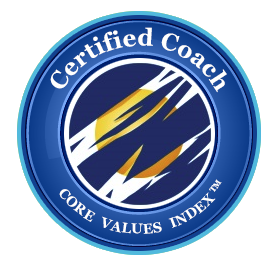
by Dr. JL Knight | Jan 1, 2019 | Decision Making, Mindset, Personal Transformation, Setting Goals
The New Year is the perfect time to start fresh. If there’s
any aspect of your life that you’d like to improve, set some clear and
attainable goals for yourself that will help you get there.
Take It Slow
Work towards your goal one piece at a time.
It’s important to take it slow and not take on too much at once. The main
reason that some people fail when it comes to their New Year’s goals is because
they fail to plan out a realistic path.
Follow Through With a Plan
It’s easy to say: “I
want to lose 50 pounds” or “I
want to learn a musical instrument.” Keep in mind that big goals like
these will take some time and effort. Diets are hard to start because you may
feel unmotivated or hungry. Musical instruments require time to master, and you
may start with weeks of just learning notes before getting to any fun melodies.
Remember that the beginning is tough. Muster up the courage and enthusiasm to
continue with your efforts. Remember that most people give up,
but you’re not most people, are you?
You’re different because, unlike most people, you’re going
to create a clear and realistic plan to take you right to success. If you’re
going to lose 50 pounds, define how you’re going to lose those pounds. Are you
starting an exercise routine? Are you going to join Weight Watchers or count
calories?
You know that you won’t lose the weight quickly; it’s a
steady loss that brings success. Even if you’re short a couple of pounds on one
of your short-term goals, you can revise your plan and kick up the pace, or
just continue on your path because you’ll reach your 50 pound goal before the
year is out. That’s what you’ll be able to accomplish with a solid plan in place.
Be Real
You have to stay realistic when it comes to your New Year’s
goals. The holidays are a joyful time, and often times you’ll feel motivated to
achieve something big. Know that you can
achieve big things, but there are also only 24 hours in a day.
Avoid making goals that would take more than a year to
complete. If you want to make a long-term goal like this, break it up into
parts and give yourself a realistic plan for your first year goal.
Visualize the Outcome
When you run into snags in the road, as you’re bound to in
life from time to time, it will help to visualize yourself reaching your
end goal. Visualizing it makes it feel real and motivates you to
continue to work hard to make it happen.
The Right Attitude
If you’re practicing the right attitude, you can go far.
It’s true that all you need to do is believe in yourself. You’ve
probably realized that if you don’t believe that you can accomplish something,
you simply won’t. How can you expect to achieve great things if you don’t
believe in yourself?
An optimistic attitude is critical to your success. Think
about how you felt when you first set your New Year’s goal. Chances are that
you had an excellent attitude, so try to maintain that mindset throughout your journey
to success with your goal.
Once you’ve determined a realistic goal and divided it up into short, achievable tasks, you’re bound for success as long as you take action to complete each step. Go ahead and make that New Year’s resolution, knowing that this year is going to be your most successful yet!
By Dr. Jacqueline L.Knight
Copyright © 2018 The Business Transformation Coach, LLC
By Dr. Jacqueline L.Knight
Copyright © 2018 The Business Transformation Coach, LLC

by Dr. JL Knight | Dec 31, 2018 | Personal Transformation, Transformation
When you’re living in the moment, your focus is on that
moment only. The past and the future can’t touch you.
It can be a difficult task to put your feelings about the
past or future aside. It’s like when someone says, “Don’t think of a pink elephant!” Did you think of one,
just now?
Well, your grief is sometimes that pink elephant and it seems like there’s nowhere to turn. In this
situation, you can look for help from present moment thinking.
Remaining in the present takes practice. While you’re
learning how to live in the moment, remember that it gets easier as time goes
on.
Using Meditation
You can work on controlling your thoughts, but one practicethat’s all about staying in the present moment is meditation. This simpleexercise can also help you get over your grief.
Here are some meditation tips:
- Make a
meditation schedule – 30 minutes per day every day.
- Go to
a place where you can relax and be alone.
- Sit in
a position with good posture.
- Take
deep breaths in and out.
- You
can use a “mantra” or
positive affirmation to help you focus.
- When
thoughts arise, acknowledge them, and then let them go.
The most difficult thing you might encounter when learning
to meditate is calming your busy mind. Focusing on your breathing helps clear
away extraneous thoughts and worries.
When you’re grief stricken, it’s an especially difficult
time to keep a clear mind. Thoughts of the past will more than likely keep
coming up in your practice. This is normal. As you continue
practicing, it will get easier to focus on the now.
An important thing to remember is to avoid judging yourself.Don’t punish yourself for thinking of the past when you’re trying not to thinkabout it. Realize that your mind is taking a turn you didn’t intend, and then lightly nudge it back in the right direction. Be grateful that you were able tocatch yourself in the midst of a negative thought, and then move on.
Keeping Up Your Practice
Once you’ve adopted a philosophy of present moment thinking,
concentrate on keeping up with your practice. Rather than a mechanism you turn
to only when you’re in a pinch, consistent present moment thinking can bring
you an exhilarating new lifestyle!
When you learn to live in the moment, you’ll find peace and happiness in life. You’ll be more calm and collected and enjoy every moment for what it is. How amazing is this!
Moment By Moment
As your practice deepens, you’ll fully realize that life isjust a series of moments. It’s not a definable measure of time, but you’ll feel many moments in every minute. Little by little, you’ll learn to recognize them.
You may find it difficult to remain in the present just because you must refer to the past and plan for the future in order to live. This is true, of course, but once the reflection is over, and the planning isput away, your goal is to remain in the moment as much as possible.
- Refer to the past when you
must, but avoid reliving grief or daydreaming.
- Plan for the future, but
don’t obsess over it.
- Simply look at what you’re
experiencing right now and immerse yourself in it.
When your mind is completely focused on the present moment, you’ll be surprised at how energizing life can be!
By Dr. Jacqueline L.Knight
Copyright © 2018 The BusinessTransformation Coach, LLC

by Dr. JL Knight | Dec 24, 2018 | Decision Making, Personal Transformation, Transformation
Do you ever wonder why you’re here? After all, you were created with a unique set of passions and talents that no one else in the world can duplicate! Discovering your purpose in life lets you use your unique assortment of feelings and abilities to bring you greater self-fulfillment.
When you’re doing what you feel like you must have been born to do, you can create a life you enjoy through and through. Your goals will have more meaning to you and challenges will be naturally easier to overcome as you joyfully move toward achieving those goals.
This process for finding your life purpose enables you to tune in to your inner self and figure out what makes you tick. Take the time to find your purpose – your life will certainly change for the better!
Prepare Yourself
For this process, an open mind is optional but helpful. It doesn’t matter if you don’t think this will work – it just means it might take a little longer. All you really must have are a piece of paper, something to write with, and approximately an hour of peace and quiet.
As you’re doing this exercise, try to empty your mind as much as possible. The clearer your mind is, the quicker and easier the process will be. Also, do this while you’re relaxed, alone, and unlikely to be disturbed.
The Process
- Focus on your intention. Write at the top of your paper: “This is my life purpose.” This simple act sets your intention in your mind for the next hour.
- Begin listing your thoughts – even doubts about this process. As you clear your mind and focus on this process, write whatever comes to mind, no matter what it is. If you think to yourself, “This isn’t going to work,” then you would write, “This isn’t going to work.”
- Answering these questions will get you started. Then keep writing your thoughts until you find your life purpose.
- What are your talents and abilities?
- Which talents would you like to develop further? Why?
- What are your passions?
- Do you get joy from helping others? Who?
- Have you always wanted to be a philanthropist?
- What activities do you enjoy?
- What have you always wanted to do, but you haven’t done it yet?
- Who do you most enjoy being around? Adults? Children? Why?
- Do you love animals?
- Do you like to travel?
- Do you want more excitement in your life?
- What are your favorite books or movies? Why?
- How do you feel about your relationships?
- Do you take an interest in politics or world matters?
- What is your most important priority in your life? Family? Work? Something else?
- How will you know? You’ll just know. It will be the answer that fills you with the most emotion. You may even cry. The idea will resonate with you completely, and there won’t be any doubt. Just continue writing whatever comes into your mind until you reach that point.
- Commonly, answers will repeat themselves. A lot of unrelated nonsense is also likely to come out. Our brains can be a little cluttered, and this exercise will expose that fact. Don’t let anything you write distract you from your intentions; odd things quite frequently end up on the paper.
- There will be several answers along the path that feel pretty good to you, but remember, you’re looking for the big one. When you see the ones that are good, but not “it,” this means you’re close, but not quite on target yet.
- You’re looking for that one idea that feels overwhelming to you. In this exercise, it’s common for your life purpose to reveal itself in less than 100 ideas, but it can take as many as 400. Keep writing.
How Can I Apply My Life Purpose to Benefit Me?
Now that you’ve discovered your purpose, always try to honor it. To do so, keep it in mind consistently. Ask yourself, “Is this in alignment with my ultimate purpose?” A life lived like this, with direction and intentionality, is a life you can truly enjoy.
So don’t wait any longer; schedule a time to do this when you know you’ll have some peace and quiet. Knowing the core reason you’re here is one of the greatest gifts you could ever give yourself.
By Dr. Jacqueline L. Knight
Copyright © 2018 The Business Transformation Coach, LLC

by Dr. JL Knight | Dec 17, 2018 | Personal Transformation, Transformation
Sometimes you feel like you’ve got all the time in the world to accomplish your dreams. Yet there are reminders every day that our time on Earth is short. Unfortunately, there’s no way to predict how much time you’ve got left, which is exactly why there’s no time like the present to make your dreams come true!
Concentrate on The Positive
It’s vital to start with positive thoughts. Whenyou think positively about yourself and your dreams, you’ll begin to believe thatyou can achieve anything. These initial positive emotions can lead to a dedicated drive and enthusiasm that’ll help build lasting momentum.
Remember that nearly everyone feels overwhelmed when you’re about to embark on a long journey. That’s exactly why it’s so easy to fall intonegative patterns of thinking, but you must fight these thoughts. It can be hard to imagine that so much can be achievedsimply by having positive thoughts, but it’s true!
The truth is, when you think about something as scary as “I could die tomorrow,” it’s
hard not to be drawn into a panic.
But instead of worrying about how much time you and your loved ones have left, concentrate
on making the present moment as productive as it can be towards your true
calling.
Careful Planning
Once you’ve decided to take action, and you’ve battled your
negative thoughts, it’s time to make some feasible plans to get you where you
want to be.
Keep these tips in mind as you go through your planning phase:
- Set realistic goals. If your goal is going to take years, give yourself years. You can’t expect everything to happen overnight.
- Be specific. Include all the details in your plans. If you stumble along the way, you’ll be comforted in knowing that you have your detailed plans to help you stay the course.
- Reward yourself. When you’ve made progress towards your goal, give yourself areward. Even if your ultimate goal is far off, it’s fun and motivating to enjoyrewards as you complete steps toward your goal.
Action in Small Steps
One of the biggest tips when it comes to following your dream
is to break down your actions into small, manageable steps.
For example, your goal could be to become an airline pilot
or you might want to start your own business. Both of these goals are hefty and
have the potential to take years of work and training.
When you first think about these goals, it’s easy to be
scared of how daunting they seem. Instead of resorting to fear, try breaking
down these goals into dozens or even hundreds of small steps. Chances are that
each small step is not nearly as overwhelming as the big picture.
At the same time, always keep the big picture in mind.
When you visualize yourself reaching your end goal, it can be an image that
gives you the drive to keep going during tough times.
Inspiring Others
Once you’ve achieved your goal, consider inspiringothers to reach their goals, too. Perhaps you have some friends orfamily members who say things like, “I’ve always wanted to do that,” but they remain working at their dead endjob.
Help them take action!
You’ll know from experience that, while it may be a risk,the reward is more than worth it. Yes, following your dreams is even a reward in itself! Itbrings you joy in the present and hope for the future. So carpe diem – seize the day!
By Dr. Jacqueline L.Knight
Copyright
© 2018 The Business Transformation Coach, LLC

by Dr. JL Knight | Dec 10, 2018 | Components of Transformation, Mindset, Personal Transformation, Transformation
Success starts with mindset. Different mindsets give different outcomes. A poor mindset leads to poor results. A positive mindset leads to success. While your experience, education, and skills can matter a lot, your mindset can make all the difference.
Luckily, anyone can develop a mindset primed for success. It’s certainly easier and less time consuming than mastering a complex skill!
Create a mindset that creates success! Include these components in your mindset:
1. Gratitude. Be grateful of what you have and have already accomplished. Be happy for the success of others. If you can’t feel happy for others when they are successful, your own success will be limited.
2. Evaluation of risk and reward. Successful people are masters at evaluating risk and reward. Unsuccessful people either refuse to take any risks or take on far too much risk for the potential reward. Neither is a successful way to approach life.
3. Focus on emotional and physical health. Sacrificing your health for success isn’t true success. What do you really gain if you achieve your goals but sacrifice your physical or emotional health in the process? Know your priorities before chasing success.
4. Abundance. Believe that there is enough to go around. Then, you won’t be in competition with others. You’ll only need to compete with yourself. You’ll maintain a more positive attitude if you believe your dreams are possible. What do you believe is possible for you to achieve?
5. Keeping mistakes and failure in the proper context. Failure is guaranteed to happen more often than not. Learn from your mistakes and failures and try again.
6. Growth. Placing a priority on growth is a necessary part of success. You can’t achieve anything new without growing in some way. It might be your skills, attitude, discipline, or courage that need to grow. Rest assured, something needs to grow if you’re currently stuck.
7. A willingness to be uncomfortable. Growth isn’t pleasant. There will be discomfort as you develop yourself, fail, and make mistakes. Even success can be uncomfortable. How uncomfortable are you willing to be to become successful?
● The willingness to be uncomfortable is the limiting success factor for most people.
8. A positive attitude. How much are you willing to do if you’re certain you’ll be successful? A lot. How much are you willing to do if you don’t have high expectations? A lot less. Give yourself and your abilities the benefit of the doubt.
● Notice how you think and how you talk to yourself. Is it positive or negative? What impact do you think that has on you?
9. Planning. Success for each person is a precise goal. You’re not going to hit it on accident. Without a destination in mind and a plan for getting there, you’re relying too much on luck to reasonably expect success.
10. A great mentor. A mentor that has achieved the success you desire knows where your head needs to be. He knows what’s important and what’s just noise. Your mindset will be more accurate and effective if guided by a qualified mentor.
Think about your current mindset and compare that to the results you’re currently experiencing in your life. Can you see the connection?
If you feel that you have the skills you need to be successful, but still come up short, it might be time to take a look at your mindset. Anyone can choose their mindset. There are no prerequisites for having a great mindset. You can just choose. Put your mind into a positive state that aids in your success.
Dr. Jacqueline L. Knight
The Business Transformation Coach









